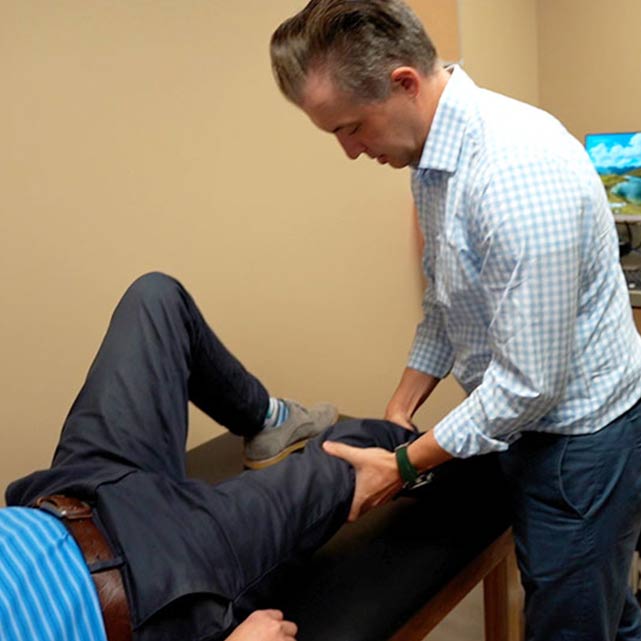Knee pain is one of the most common reasons people find themselves seeing an orthopedic doctor.
The knee is a complex joint with multiple moving parts. This makes it susceptible to many different types of injury. From acute injury related to a fall or trauma to simple wear and tear over time, knee pain is something nearly everyone must manage at some point in their life. In this post, we will discuss the basic anatomy of the knee, as well as some of the most common diagnoses associated with knee pain. We will also review some treatments you can try at home and discuss some red flags that might suggest more serious injury and a need for an appointment.
The Knee is a Complex Joint
The knee is described as a complex joint. This means it doesn’t function simply as a hinge that opens and closes. The knee also rotates and slides as it bends creating a unique motion pattern. For a joint that absorbs our weight thousands of times each day, it does a great job! There are multiple structures that make up a knee joint.
Knee Bones
The femur (thigh bone), tibia (shin bone), and patella (knee cap) are the three bony structures that comprise the knee joint.
Knee Cartilage
Each of these three bones are “capped” by a structure called articular cartilage that is ultra-smooth and helps our joints move smoothly with limited friction and pain.
Knee Ligaments
ligaments are soft tissue structures that attach bone to bone and help stabilize joints. In the knee, the anterior and posterior cruciate and the medial and lateral collateral ligaments are the four main structures that help keep our knee stable.
Knee Tendons
Tendons attach muscle to bone and also help to stabilize a joint by allowing muscular contraction to exert a force.
Meniscus
These cushion-like structures help reduce force from weightbearing on the cartilage.
All these structures are susceptible to injury or wear and tear over time. Among the most common injuries are fractures, dislocations, ligament injury, meniscus injury, and arthritis. Fracture includes any break in the bone and is usually associated with a major trauma. Signs and symptoms of fracture including pain, inability to walk, and swelling among others. The most common dislocation in the knee is that of the kneecap. More common in women than men, the kneecap can slide out of place causing significant pain and swelling. While ligament injury is most associated with football players, nearly any activity can result in damage to a ligament.
The most common symptom associated with ligament injury is instability, or the sensation that your knee is “giving out.” Meniscal injury is among the most common of all injuries to the knee. This is due to the limited blood supply to the meniscus and its important role as a cushion between the two bones. Symptoms of a meniscus tear include significant swelling inside the joint as well as locking or catching in the knee. These are sometimes called mechanical symptoms. Another common cause of knee pain is arthritis. As the steps we take each day accumulate over time, wear and tear of the joint surface cartilage accrues as well. Often, these changes occur so slowly we don’t![]() even realize it until significant damage has already been done!
even realize it until significant damage has already been done!
Wichita Knee Pain Treatment
Fortunately, many treatments are available for the causes of knee pain. In most cases, nonsurgical management can provide significant relief from symptoms and a return to regular activities. Rest, ice, compression, elevation, and anti-inflammatory medication after excellent treatments to try at home if you sustain an injury. If your symptoms fail to improve with home treatments it may be time to schedule an appointment with a Wichita orthopedic doctor to take a closer look and determine the cause.

